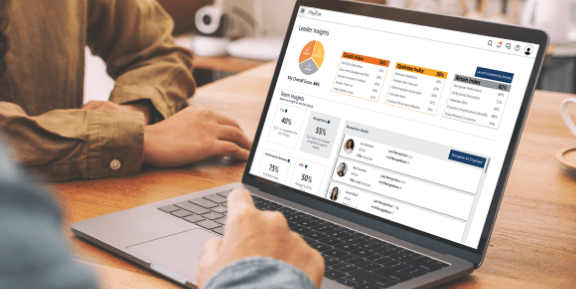Consistent employee evaluations help remind employees of their manager’s and the company’s expectations for their overall performance. They also give managers valuable insight to use when they make important decisions such as giving a promotion or raise, as well as negative actions like terminations.
In typical evaluations, a manager details the employee’s contributions and weaknesses verbally and in writing. Then the manager and employee discuss any areas of improvement in addition to creating future goals and objectives. A lot of companies also ask the employee to submit a self-evaluation.
Evaluations Aren’t One-and-Done
Or at least they shouldn’t be. Employee evaluations should be an ongoing part of a manager’s duties. Often, employees view annual performance reviews as something to dread, much like being called to the principal’s office as a kid. They get sweaty palms and butterflies in their stomachs just thinking about it. It shouldn’t have to be this way! When managers check in with their team members on a quarterly or monthly basis, they can easily and more quickly see trends and issues and resolve them before they have a chance to become truly problematic.
According to a study conducted by research firm, CEB, 95% of managers are dissatisfied with formal performance reviews, and 90% of HR professionals think they’re inaccurate. That’s pretty huge. Here are a few pros and cons of conducting annual evaluations.
Pro #1: Everyone likes to know how they’re doing.
Nobody likes to work in a vacuum, so of course, performance appraisals can be a great temperature check.
Pro #2: They quantify employee performance.
When managers have objective information, they can more easily see where employees fall on the performance continuum, which makes financial decisions more straightforward.
Pro #3: They can be motivating.
This is especially true for employees who have been around for a few years. Looking back on the progress they’ve made at the company can be encouraging.
Con #1: Performance reviews are typically one-sided.
Annual reviews generally end up being a manager reading off a litany of the good, bad and ugly of an employee’s year. Taking copious notes and waiting for that one day a year to dump everything on an employee can be really counterproductive and demotivating.
Con #2: They’re not objective.
No, really, they’re not. No matter how much a manager attempts to objectively review an employee’s work habits, conscious or subconscious bias is always going to sneak in. Did an employee majorly screw up the week before her performance review? The manager is inherently going to have a negative bias toward her just walking in to the review.
Con #3: Stack ranking in the evaluation process is bad business.
When managers are required to rank their team members from top to bottom performers, it’s a problem. What if they have a solid team and there are no bad performers? This practice can have a highly negative impact on team morale – pitting employees against each other – especially when raises and bonuses are tied to the rankings. It can also result in managers losing good people who are an asset to the company in the event of a layoff.
Con #4: They’re expensive!
Think about the hourly pay for managers and the employees they’re reviewing (and the salaries for the manager’s managers, and so on up the chain). When you consider the time it takes for an annual review and do the math, you can see how it’s costing the company money.

How to Conduct an Employee Evaluation
Here are a few steps to follow when conducting employee performance reviews.
- Prepare for employee reviews! Never walk into an evaluation empty-handed. Take the time to collect your thoughts and any relevant notes before the actual review meeting and use an evaluation document as the basis for the meeting. When you have everything sorted out ahead of time, the meeting will stay on track, ensuring that you don’t miss any critical points.
- Keep commentary transparent and direct. If you’re not clear and concise when delivering employee evaluations, you risk having your employees leave the evaluation with more questions than answers. Use specifics whenever possible. For example, if you ding an employee for poor time management, you should have examples of missed deadlines or instances when other team members had to take up their slack.
- Don’t be vague with performance appraisals. Make sure all of the goals you assign an employee include expected time-frames and measurement methods.
- Keep the conversation a conversation. Don’t dominate the discussion. Instead of preaching to the employee about what they’ve done wrong and how they need to remedy the situation, encourage a conversation. Give the employee an opportunity to share a self-assessment if they filled one out. Be sure to discuss areas you both agree need improvement.
- Give your employees a copy of the evaluation form. Receiving honest feedback about their work performance is something most workers value. When employees have a copy of their completed evaluation form, they’ll have concrete guidelines to help them stay on track with their goals.
- Have evaluations throughout the year. Having informal weekly, monthly, or quarterly review sessions can really be beneficial. Regular reviews and touchbases can help reduce some of the pressure that results from an annual employee evaluation. Regular feedback can be less intimidating.
A successful employee review requires a fine balancing act of criticism and recognition, and setting challenging yet attainable employee goals. By following the tips above, you can open the lines of communication with employees, help them excel in their careers and boost performance across your team or business.
Need help with performance reviews?
Perform HR allows your employees to add goals, track performance and interact with their managers electronically. You can easily track workflow processes online. Alerts will notify you when an approval is needed or when a change has been made. See for yourself how Perform HR can help.









